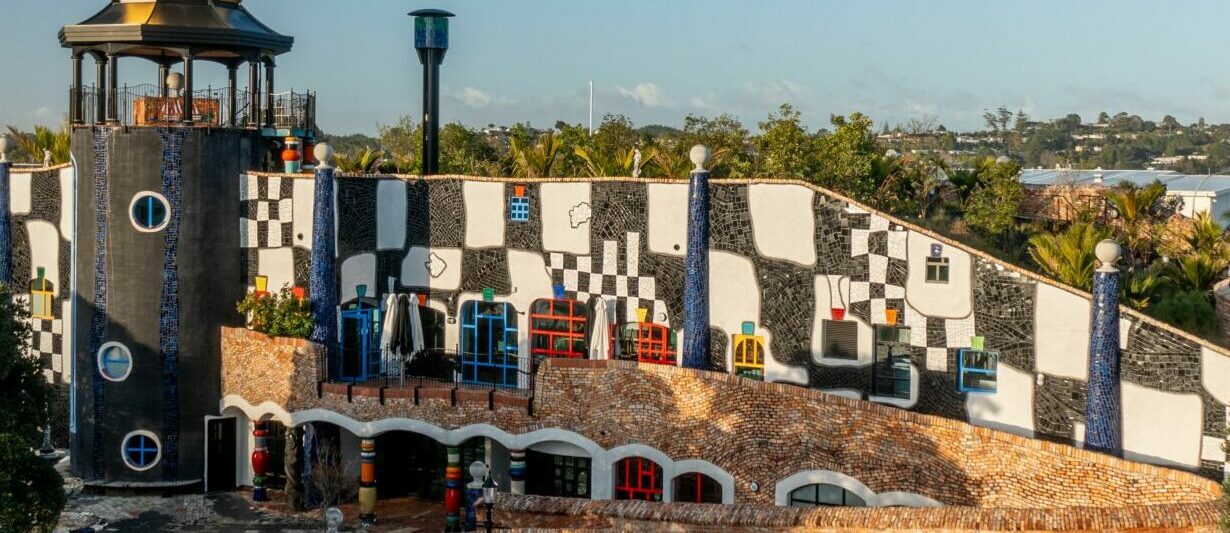
The Hundertwasser Art Centre with Wairau Māori Art Gallery celebrates art and architecture in harmony with nature and individual creativity. The Austrian New Zealand artist Friedensreich Hundertwasser was first and foremost a painter, but became involved in architecture and environmental activism because of his concerns about the exploitation of natural resources and ruthless urbanisation and industrialisation.
Located in Whangarei, the design of the Hundertwasser Art Centre with Wairau Māori Art Gallery was based on initial sketches by Hundertwasser himself thirty years ago. The building invites its visitors to reflect on sustainable ways of living and working in the context of the climate crisis and expectations of ongoing economic growth.
invites its visitors to reflect on sustainable ways of living and working in the context of the climate crisis and expectations of ongoing economic growth.
The exhibition Hundertwasser in New Zealand 1973-2000 narrates how Hundertwasser lived in harmony with nature and, through his art and architecture, invited others to do so as well. Referring to mankind as “the most dangerous pest to ever devastate the earth”, the final section of the exhibition asks visitors explicitly to think about environmental activism in their own lives and society at large.
In this Friends of Te Papa talk, Dr Joost de Bruin, Director of the Hundertwasser Art Centre, will take us through the design of this unique space and ask us to reflect on the experience and conclusions about a sense of hope for the future that may be drawn from it.
 Dr Joost de Bruin is Director of the Hundertwasser Art Centre in Whangārei and Adjunct Professor at the Stout Research Centre for New Zealand Studies at Te Herenga Waka – Victoria University of Wellington. He was previously Associate Professor in Media and Communication at Te Herenga Waka and President of Dutch Communities NZ. As a member of the Dutch Connection Trust he was involved in the establishment of the Te Awahou Nieuwe Stroom cultural and community centre in Te Awahou/Foxton.
Dr Joost de Bruin is Director of the Hundertwasser Art Centre in Whangārei and Adjunct Professor at the Stout Research Centre for New Zealand Studies at Te Herenga Waka – Victoria University of Wellington. He was previously Associate Professor in Media and Communication at Te Herenga Waka and President of Dutch Communities NZ. As a member of the Dutch Connection Trust he was involved in the establishment of the Te Awahou Nieuwe Stroom cultural and community centre in Te Awahou/Foxton.
Photo credits: Sam Hartnett.